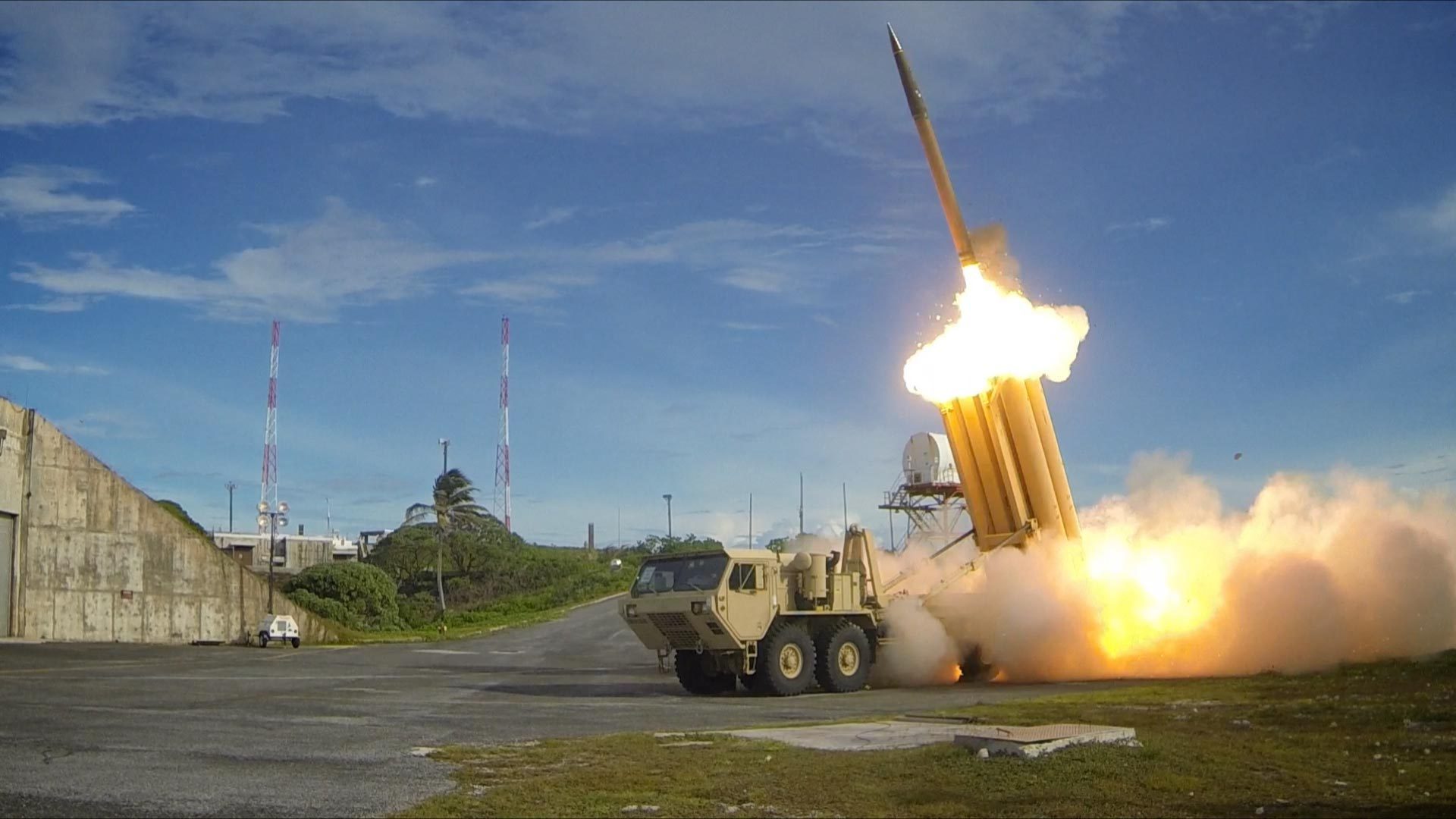Two major components of Lockheed Martin’s Terminal High Altitude Area Defense (THAAD) system will be manufactured in Saudi Arabia, according to multiple reports.
The move assumes great significance as it comes at a time when the Gulf country faces missile and UAV attacks from Iran-backed Houthi rebels in Yemen.
In another development, a Saudi state-owned defense company said that there are plans underway to produce the indigenously developed “SkyGuard” drones for its armed forces. The Suadi drone should not be confused with the American MQ-9B SkyGuardian UCAV.
On the sidelines of the World Defense Show on March 7, the General Authority for Military Industries (GAMI), the Saudi defense industry regulator, announced the local manufacture of THAAD missile interceptor launchers and canisters, Saudi Gazette reported.

“For over 50 years, Lockheed Martin has been a committed partner to Saudi Arabia, as the country continues its journey toward ensuring a safe, secure and sustainable future for its people,” Joseph Rank, chief executive for Lockheed Martin in Saudi Arabia and Africa, was quoted as saying.
Indigenous Drones
“Saudi Arabian Military Industries (SAMI) is working with the General Authority for Military Industries (GAMI) to produce a Saudi-made drone”, Chief Executive Officer (CEO) Walid Abukhaled told Al-Ekhbariya TV, on the sidelines of Worlds Defense Show (WDS).
“The company is working on establishing the world’s largest munitions factory and localizing defense industries”, Abukhaled added.
The drone system was developed by the Prince Sultan Defense Studies and Science Research Center (PSDSSR) in 2015 and has been displayed in several defense events internationally since then.
In August 2021, the Advanced Electronics Company (AEC), a subsidiary of SAMI entered into an agreement with PSDSSR for mass-producing the drone.

“This important milestone in the manufacture of advanced technologies will help to ensure the successful shift from research, tests, and experiments to manufacturing and mass production,” said Dr. Sami bin Mohammed Al-Alhumaidi, acting Director-General of the PSDSSR at the time of signing the agreement.
In 2018, two of the SkyGaurd drones, “Haris Al-Ajwaa” and “Al-Nawras”, were showcased at the Armed Forces Exhibition for Diversity of Requirements and Capabilities (AFED).
PSDSSR researchers cited by Arab News claimed Haris Al Ajwaa weighed 250 kilograms and could perform automatic takeoff and landing, and continuously fly for 10 hours at a range of 200 kilometers and an altitude of 18,000 feet.
It can be equipped with high-resolution cameras and also an electronic warfare system (EWS) to jam or block the enemy’s radars and communications. Two laser-guided bombs weighing 12 kg each and explosive bombs up to 7 kg could be added to the drone.
The Al-Nawras was designed to be a lightweight unmanned aerial vehicle (UAV) system that can be launched from different locations and performs surveillance, monitoring, and tracking, as well as supporting and correcting shootings.
t is 4 meters long with 38 kg weight and can fly for 5 hours at an altitude of 4,000 meters, and, owing to its small size, can be launched from ships using a launcher, added Arab News.
Threat From Iran-Backed Proxies
Recently, the Kingdom of Saudi Arabia (KSA) faced drone and missile attacks by Irani-backed Houthi militias. The country is also assisting the Yemeni government to fight these elements. KSA wants to boost its military capability with advanced drones as it watches Iran becoming a major actor in the Middle East.
To its north, KSA has a land border with Iraq, a volatile country with a huge influence of Iran-backed militias, and the presence of terror groups such as ISIS and al-Qaeda.
The rise of the terrorist group ISIS in 2013 had prompted KSA to invest hugely in a 900 km long, multi-layered security fence barrier along its northern border with Iraq that consists of 78 monitoring towers, eight command centers, 10 mobile surveillance vehicles, 32 rapid-response centers and three rapid intervention squads, all connected by a fiber-optic communications network.
Some 3,400 people have been trained to man this barrier, according to the Saudi Press Agency.
To enhance the national defense and local capabilities, #AEC, represented by CEO, Eng. Ziad Al-Musallam signed an agreement to manufacture a drone (Sky Guard) with Prince Sultan Defense Studies and Research Center, represented by Dr. Sami Al-Humaidi, Director General of @PSDSARC.
— الإلكترونيات المتقدمة (@AECSaudiArabia) August 19, 2021
This growing need for border security may have motivated Riyadh to develop its drone capabilities, as UAVs are able to cover a large land area while identifying the changes on the ground more effectively, thus providing a cheaper alternative to building and maintaining a physical border fence.
The KSA and UAE have been operating Chinese-made Wing Loong and Cai-Hong (CH) 4B drones. These drones have been deployed in battles inside Yemen.
In 2017, the Saudi government and China Aerospace Science and Technology Corp (CASC) entered into an agreement to co-produce CH-4 drones in a new factory in Riyadh.
CH-4 drone is considered similar to the US Air Force’s General Atomics MQ-1 Predator, which the US has refrained from selling to the KSA to stop their potential deployment in Yemen.
That said, the homegrown SkyGaurd drones would be a big boost to KSA’s UAV capability as the country looks to have a fleet of 900 drones and localize 50% of defense acquisitions in line with its Vision 2030.
- Written by Tanmay Kadam/EurAisan Times Desk
- Mail us at: etdesk@eurasiantimes.com
- Follow EurAsian Times on Google News




